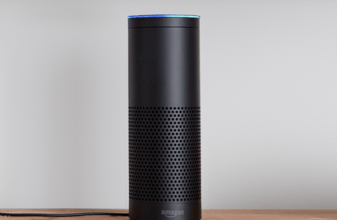
Padawan Series: How to Take Your Apparel Brand Online
Today, eCommerce is more important for brands than ever. With physical limitations in place for the foreseeable future, having a strong online presence is crucial.
Your eCommerce platform needs to accurately reflect your business and its values, as well as your services or products. But it also needs to adhere to industry standards. With Google Search recently announcing it will be favoring websites with great UX, now is the time to translate the positive experience your customers have with you and your products into a positive user experience, or UX, on your website.
Fortunately, we are all in “an environment where imagination and technical ability, not wealth, are the only barriers.” That means if you’re driven and committed to succeeding online, you can.
Here are six actionable tips for how to take your apparel brand online.
Choose a clean, simple design
For a strong first impression, choose a clean, minimal theme for your website. This makes it easier for customers to immediately identify your central product(s) and ethos. If your brand already has a visual identity in terms of colors, patterns or textures, these should be incorporated into your website’s design. This is key to creating a positive brand experience. It also gives your returning customers the assurance that they’re in the right place. New customers will feel confident when they see this consistency across your website, social media pages and in photos of your operations. With this consistency, you’re sending a visual message that this same commitment to quality translates to your products or services. A streamlined homepage also ensures a faster load time for your website, which is another crucial element of good UX, especially when considering the fact that 57% of visitors will leave a website if it takes longer than 3 seconds to load.
Have a strong logo and high-quality photos
Make it clear who you are by putting your logo front and center on your homepage. It should be high resolution and scalable for mobile. Test your website on as many different devices as possible—on desktop and mobile, as well as tablets and Android and iPhone devices. This will help you identify and minimize any bugs. It may sound obvious, but by taking the time to brand your eCommerce store consistently and clearly, you’re ensuring it communicates the same level of professionalism that you have in every one of your client interactions. Represent your products and services well with clear, high quality and relevant photos. Clients will be much more likely to place an order if they know exactly what they’re getting. If you can, invest in original photography, instead of stock photography. It’s another way to stand out among your competitors, and adds a personal touch.
Be mindful of your SEO
Alongside your quality photos, you’ll need descriptions of your products or services. These should be short and sweet, and employ sound SEO tactics. Try to strike a balance between natural language and industry terminology. You want to attract people who are looking for your services and products, but not drive people away who may be unfamiliar with the lingo. Whatever you do, don’t go overboard and jam a bunch of jargony search terms in a sentence. Google can and does punish websites that try to trick the system with keyword overload. So remember, like your visual design, clean and simple is key.
Have an awesome ‘about’ page
Clients and customers want to know and trust the people behind the brands they’re supporting. They are searching for brands whose values align with their own. This doesn’t mean you need to divulge your life story on your website (unless it’s relevant to your business). But a few personal touches can go a long way in garnering loyal clients. Let them get to know you by adding an ‘About’ page to your eCommerce platform, and share a bit about who you are and what you do. We recommend adding staff photos and short biographies for your ‘higher profile’ employees.
Ensure your website is mobile-friendly
Nowadays we use our cellphones for almost everything, so you can be sure a lot of your clients will be coming to you that way. More than half of online shoppers make purchases using a mobile device, so while you spend hours sharpening your desktop site, ensure you also pay attention to how it scales, and optimize each page for mobile. Users who have a negative experience in your mobile store are said to be 62% less likely to purchase from you in the future. So try to ensure your mobile site loads as smoothly and quickly as possible. An effective, simple and cost-effective way to do this is by implementing a Progessive Web App (PWA) to your mobile site, which replicates the app experience on a mobile browser, for a fraction of the cost and commitment of a Native App. Learn more about PWAs in our recent blogs.
Keep track of your analytics
Once your website is up and running, keep track of its performance via analytics, and adjust where necessary. Not getting many visitors for a certain product or service? Try adjusting your SEO in that area by researching the latest popular search terms and updating your copy. Ensure you keep your website up to date with any new services or products you add, and consider adding these to your homepage, for visibility. It pays to check in regularly on how your website is performing. Consider making a calendar reminder for yourself to look at your analytics. Keeping your SEO strong will help keep your business strong, too.
Conclusion
By taking the time to get the basics right, you’ll be well on your way to having a successful eCommerce platform for your apparel business. Represent your brand online as you would in-person—with your unique style, care and attention to detail. If you’d like some extra help with taking your apparel brand online, click here to speak to a member of our team.

























